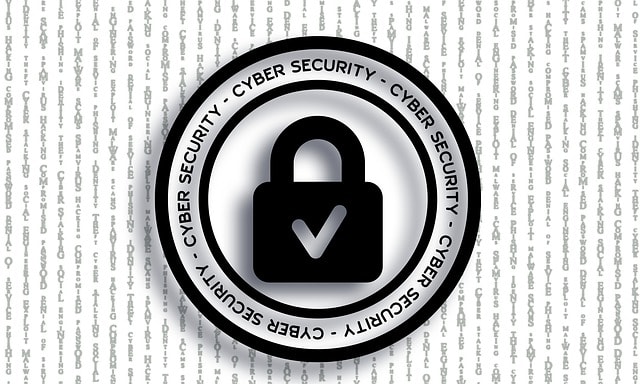Passwords are your first line of defense. Weak or easily guessable passwords are an open invitation to cybercriminals. Encourage strong, unique passwords for each user, and consider implementing multi-factor authentication (MFA) for an extra layer of security.
Implement Network Security Measures
Firewalls, intrusion detection systems, and encryption are all essential components of a robust cybersecurity strategy. These measures protect your network from unauthorized access and data breaches.
Secure Mobile Devices
Smartphones and tablets are often integral to business operations nowadays. Ensure that these devices are secure, with features like remote wiping in case they are lost or stolen.
Keep an Eye on Third-Party Vendors
Cybersecurity isn’t just about your internal systems. Third-party vendors can be potential weak points. Evaluate their security practices and ensure they align with your standards.
Use Secure Wi-Fi Practices
Public Wi-Fi networks are often insecure, making your business vulnerable to various cyberattacks. Encourage the use of virtual private networks (VPNs) and strong, unique Wi-Fi passwords.
Regularly Monitor Network Traffic
Continuous monitoring of network traffic can help you spot unusual activities that may indicate a breach. Early detection can prevent further damage.
Encrypt Sensitive Data
Encryption scrambles your data, making it unreadable to unauthorized parties. Implement end-to-end encryption for sensitive information, both in transit and at rest.
Maintain Compliance
Depending on your industry, you may have specific regulatory requirements for data security. Ensure that your cybersecurity practices align with these standards to avoid legal issues.
Beware of Social Engineering
Cybercriminals often use psychological manipulation to trick employees into revealing sensitive information or executing malicious actions. Educate your team to recognize and resist these tactics.
Regularly Audit User Access
Ensure that each user has access only to the resources they need to perform their job. Regularly audit and update user permissions to minimize the risk of unauthorized access.
Patch Management
In addition to keeping software and systems up to date, patch management is essential. Apply security patches promptly to address vulnerabilities and minimize potential entry points for cyber threats.
Secure Your Website
If your business has an online presence, your website is a potential target. Regularly update and secure your website to protect against common attacks like SQL injection and cross-site scripting.
Implement Employee Offboarding Procedures
When employees leave your organization, ensure that their access to your systems is promptly revoked. Former employees can pose a security risk if their access remains active.
Secure Physical Access
Don’t forget about physical security. Unauthorized physical access to your servers or data centers can result in data breaches. Implement strict access controls and surveillance.
Evaluate and Update Policies
Your cybersecurity policies should evolve with the threat landscape. Regularly review and update your policies to ensure they safeguard your business effectively.
Protect Intellectual Property
Intellectual property is often a prime target for cybercriminals. Implement measures to protect your proprietary information, including patents, trade secrets, and copyrighted materials.
Test Your Defenses
Regularly test your cybersecurity defenses through penetration testing and vulnerability assessments. Identifying weaknesses before attackers do can save your business from a breach.
Having a Disaster Recovery Plan
While backups are essential, a disaster recovery plan focuses on the processes and procedures to follow after a cybersecurity incident, ensuring a swift recovery.
Collaborate with Other Businesses
Sharing information about cyber threats and vulnerabilities with other businesses can help everyone stay better prepared. Joining industry-specific information sharing and analysis centers (ISACs) can be beneficial.
Be Wary of Insider Threats
Not all threats come from outside your organization. Insider threats, whether intentional or unintentional, can be just as damaging. Monitor user activity for unusual behavior.
Use Secure File Sharing
When sharing sensitive files, choose secure methods and tools to ensure data remains protected throughout the sharing process.
Budget for Cybersecurity
Investing in cybersecurity is an ongoing process. Allocate a sufficient budget to continuously improve and adapt your security measures as new threats emerge.
Build a Strong IT Team
A knowledgeable and dedicated IT team is essential for a robust cybersecurity strategy. Hire and train professionals who understand the latest threats and best practices.
Educate Customers and Clients
If your business deals with customer data, educate your clients about the measures you take to protect their information. This transparency can build trust and loyalty.
Consider Cyber Insurance
Cyber insurance policies can provide financial protection in the event of a breach. Evaluate your options to determine if it’s a suitable investment for your business.
Keep Abreast of Legal Changes
The laws and regulations surrounding cybersecurity are constantly evolving. Stay informed about changes that may affect your business and ensure compliance.
If you want to partner with a knowledgeable team that can keep your business and its IT secure, CMIT Solutions Gaithersburg and Frederick is the choice for you! If you’re ready to get started, get in touch with us and see what our services can do for you and your business.




